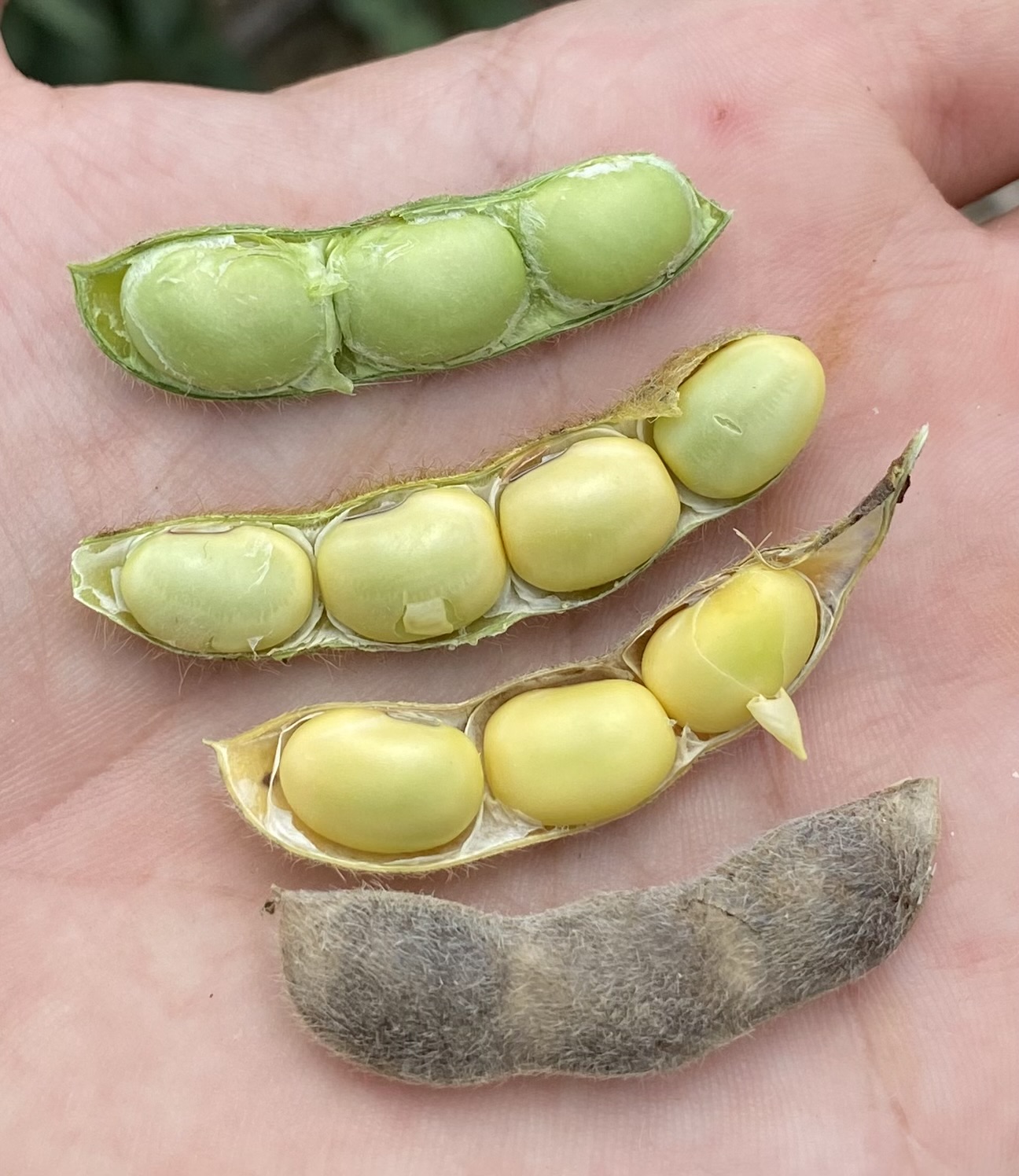As we move into the 3rd week of August, it’s time to consider your desiccation options for soybean. Application timing is the most important. Too early and we will lose yield. Too late, and we’ve missed the window.

R6
R6.5
R7
R8
| Application Timing |
| Accurately timing a harvest aid application is critical. A premature application will reduce yield. R6.5 (in the top 4 nodes) is the earliest (and my preferred) growth stage for triggering a harvest aid application. We want the pod wall membrane to easily separate from the seed prior to application. Waiting until R7 is not uncommon and a benefit in timeliness of harvest is still on the table. However, make sure the entire field is at least R6.5 before spraying. This may mean multiple sampling points within the field. |
| Products |
| The three main materials utlilized as soybean harvest aids are paraquat, saflufenacil (Sharpen), and sodium chlorate (Defol 5). I have used and continue to use each of these products year in and year out. In periods of hot and dry weather following an application, it is difficult to see a difference between the efficacy of each of these three. However, in cooler and or wetter conditions, paraquat usually works the fastest. It also has the longest PHI. |
| Paraquat |
| Most of my harvest aid applications include paraquat at 0.25 lb. ai. (10.7 fl. oz. of Gramoxone SL 3.0). In my experience, it works the fastest of these three products. Across years and variable environmental conditions, it provides consistent performance. |
| Sharpen |
| As a stand-alone product, Sharpen is probably at the bottom of my list when making recommendations. In my trials, it is slower and slightly less effective when trying to defoliate a dense canopy that is still green, which is a common occurrence at R6.5. However, it works very well as a desiccant. That is, if defoliation has occurred prior to application and the goal is to desiccate the stalk & remaining stems, Sharpen is still a good option with a very short PHI. |
| Sodium Chlorate |
| Sodium chlorate is in a slightly different class as it is not a herbicide, but a true desiccant. It rapidly pulls moisture from plant material across a moisture gradient (from plant tissue into the atmosphere).*There is technically no true labeled PHI for sodium chlorate when used as a harvest aid for soybean. Per Drexel, this is a recommendation for maximum performance. My data & experience with this product agrees, as it takes at least 10 days for optimum performance. |
| Product | Rate Acre-1 | PHI |
| paraquat | 0.25 lb. ai. | 15 days |
| paraquat + Sharpen | 0.25 lb. ai. + 1.0 fl. oz. | 15 days |
| paraquat + sodium chlorate | 0.25 lb. + 3.0 lb. ai. | 15 days |
| sodium chlorate | 6 lb. ai. | 7 – 10 days* |
| Sharpen | 1.5 fl. oz. | 3 days |
| surfactants per label recommendations | ||
| Tank-Mixtures |
| Paraquat, Sharpen, and sodium chlorate may be tank-mixed if desired. I have only ever added either Sharpen or sodium chlorate to paraquat, never Sharpen + sodium chlorate. Such tank-mixes are labeled and are not uncommon. As with single-product applications, performance with tank-mixtures relative to paraquat alone may be difficult to discern during periods of hot and dry weather. However, in cooler and wetter conditions, differences may be seen. |
| Recommendations |
| My leading recommendation for desiccation continues to be Gramoxone at 0.25 lb. ai. However, sodium chlorate has also proven to be a good option. With any harvest aid, expect to allow at least 10 days for optimal performance. Please exercise caution with contemplating a harvest aid application with a significant weather system is in the immediate forecast. Harvest aids do not reduce yield or seed quality. However, they can expose a crop that is physiologically mature to adverse weather conditions if timed incorrectly. Utilize harvest aids to your advantage. Logistically, if you can’t have a combine in the field 10 – 14 days following an application, consider waiting until you can. |
| Please reach out with any questions this fall.
Jake McNeal – 931 993 4578 |

